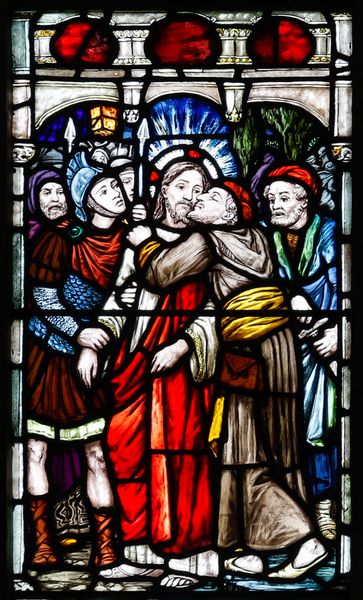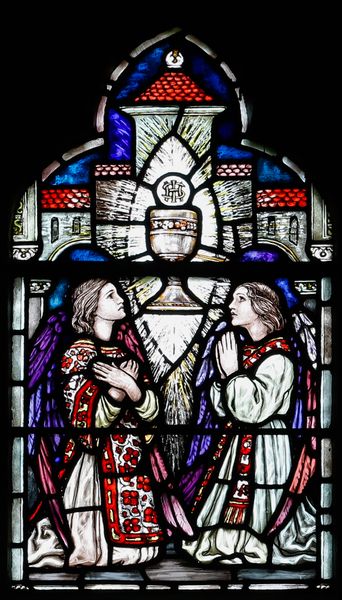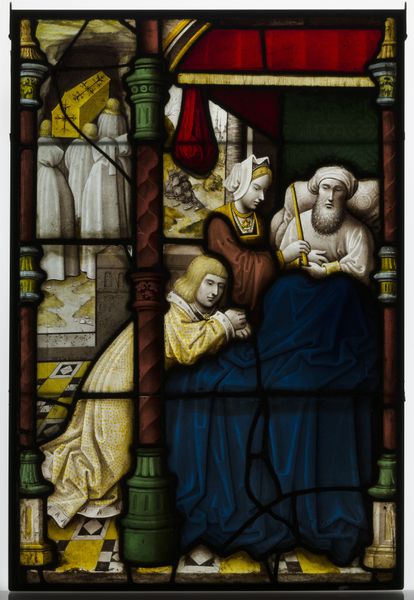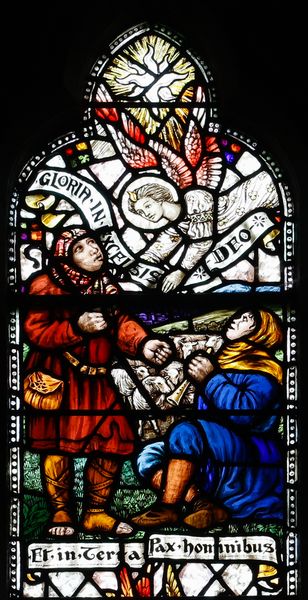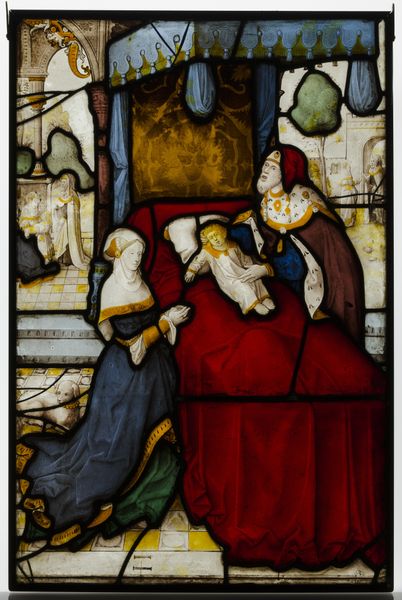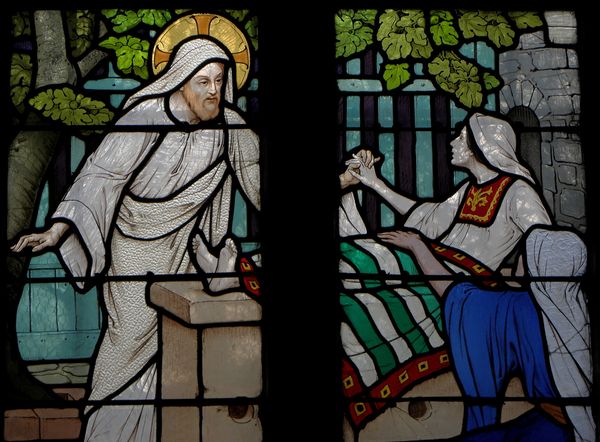
glass
#
medieval
#
stain glass
#
figuration
#
glass
#
history-painting
Copyright: Public domain
Curator: Looking at Sarah Purser’s stained glass from 1908, titled "Loughrea St. Brendan's Cathedral. Scene with Pontius Pilate", I’m struck by the rich, saturated color. Editor: It's somber, despite the light. The architecture feels heavy and constricting, as though it's weighing down the figures. Curator: The historical context is paramount here. Consider the role of stained glass in early 20th century Irish nationalism. Purser used her art to promote Irish identity and revive traditional crafts within sacred spaces. Editor: True, but even devoid of that, consider the structural tension in this design. Pilate sits passively, robed in crimson, while the figure pleading before him leans forward with his hand grasping toward Pilate. The composition, thus, uses line and implied motion to suggest power and desperation. Curator: Precisely. The figures become symbols of political struggle. Pilate embodies authority, detached from the turmoil, while the petitioner mirrors the vulnerability of the Irish populace under British rule at the time. This choice to work within religious institutions allowed her work to access to the popular imaginary. Editor: What I find compelling are the formal contrasts. The smooth planes of Pilate’s face against the craggy lines of the petitioner’s. The solid blocks of color next to the intricate filigree above them. Purser seems keen on creating tension in every plane of the work. Curator: We cannot disregard how such an artwork interacts within Loughrea's cathedral. Consider the impact of sunlight filtering through these panes, casting the narrative shadows of subjugation and power onto the congregation. Purser made potent symbolic choices through the deliberate staging of light and story. Editor: And with that diffusion, there's a transformation. No longer a still scene, but one capable of change, reflection, of active discourse. In its construction, Purser captured a fascinating study of a tense human moment. Curator: Indeed. And the enduring legacy of this piece prompts contemplation on the enduring power of art as political, cultural, and artistic declaration.
Comments
No comments
Be the first to comment and join the conversation on the ultimate creative platform.
